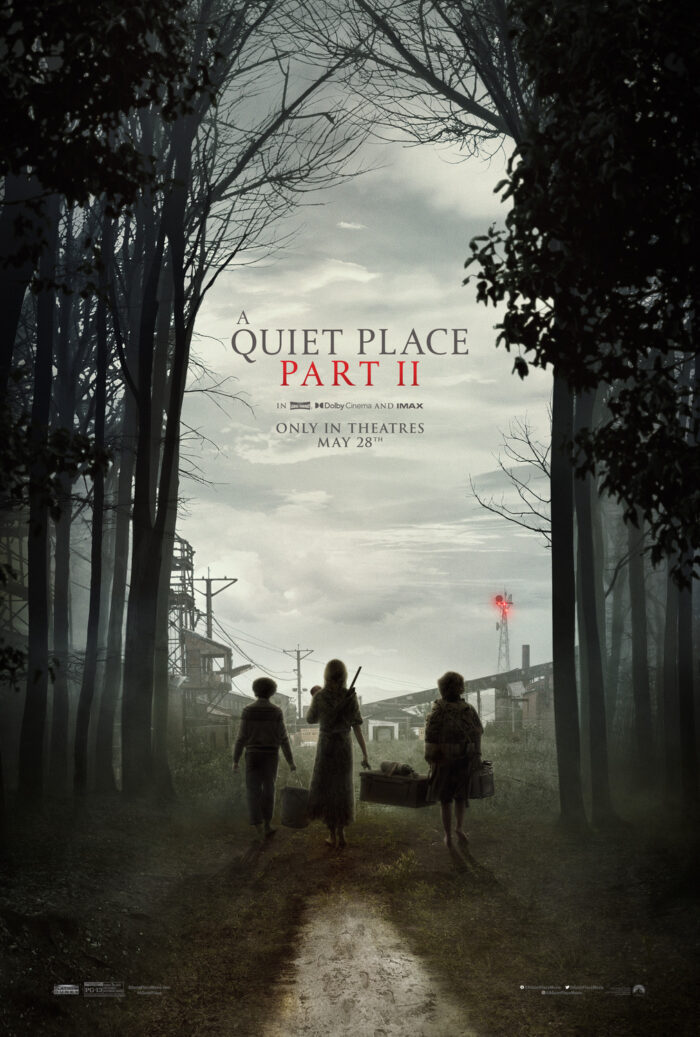This review has major spoilers as I found I could not talk about the film to the depths I wanted without revealing key moments of the plot. Read on at your own risk.
I was surprised when I heard about the sequel for A Quiet Place. Its storytelling was so tight, its images and characters so compelling, I wondered if more could be told.
A Quiet Place II proves there is more to say after the first installment. It delves more deeply into certain characters while still proving they do belong in the larger overall story.
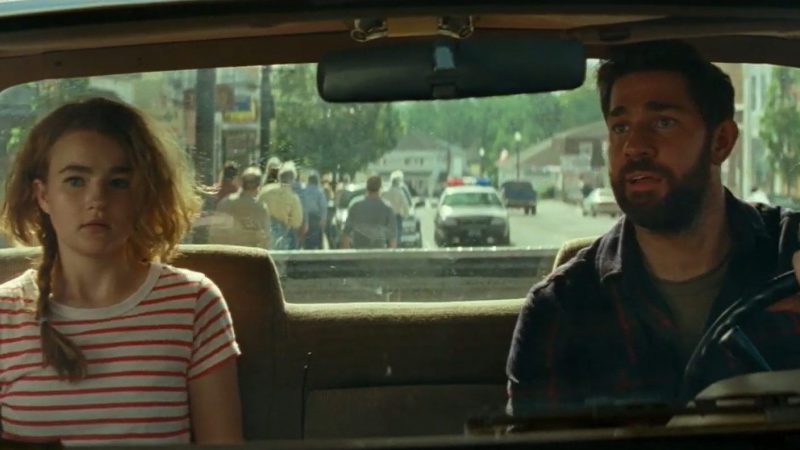
It opens with Day 1, when the creatures first land on earth. Did they crash land? Are they an invasion force? The question isn’t answered, and honestly, it doesn’t matter.
We see more of the Abbotts’ family life as they and other community members attend a baseball game. The narrative reintroduces Marcus’s fearful nature as he shies away from a pitched baseball when it’s his turn to bat. At the same time, we see the supportive natures of his mom and his sister. Emmett, a friend of Lee’s and whose child is also playing baseball, is introduced. He does not know sign language and finds communicating with Regan difficult.
We see little Beau Abbott, alive and well. For now, at least.
After demonstrating the chaos and danger of Day 1, the story brings us to a few moments after Lee’s death, to the surviving Abbotts’ home in ruins from both fire and water.
They need to leave. The exhaustion and grief hanging onto them is tangible.
After the effort to introduce Emmett in the opening moments of the film, it’s not surprising that they run into Emmett again. It’s clear from the get-go his character is meant to mirror the Abbotts. Like Evelyn, his partner is dead. Like Evelyn, his son is dead. Unlike Evelyn, he has completely lost all hope. When the story reintroduces him, he’s bundled up in long pants, a kerchief over his face, and a hat pulled low over his eyes. He also wears shoes, a stark contrast to the barefoot vulnerability of the Abbots. His defenses are all the way up, and his clothes are the metaphor.
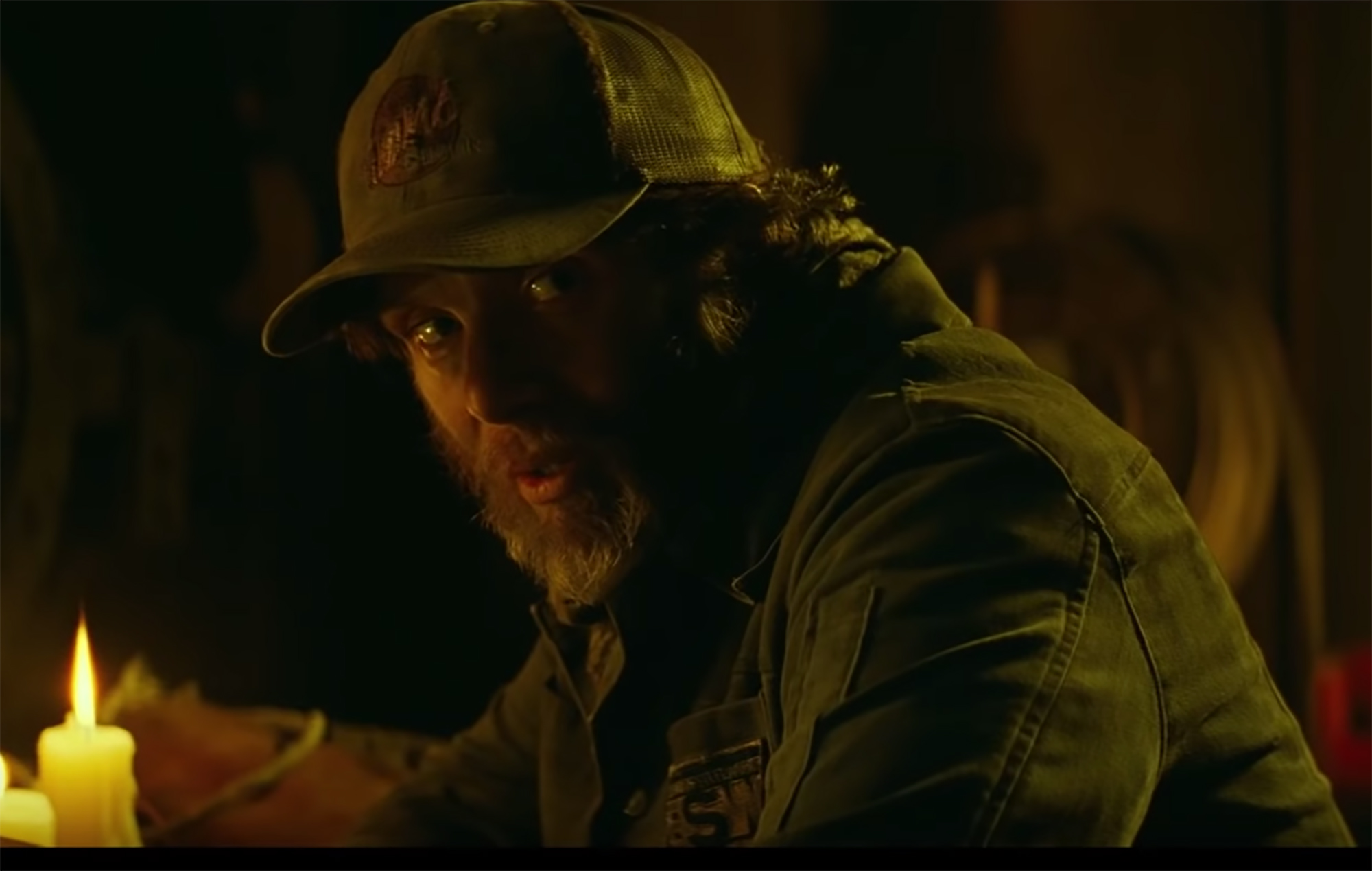
While listening to the radio, they hear a song on one of the stations. Regan, convinced the song is a code to find a safe place with other people, shares with Marcus her plan to find it. Marcus begs her to stay, but she goes because it’s what Dad would do. The blame she still feels for Beau’s death is tangible: this time, she’s going to save them all.
Evelyn, still recovering from everything that happened earlier, begs Emmett to find her daughter, because he was her husband’s friend once. Regan’s and Emmett’s eventual team-up becomes one of the film’s core heartbeats as they navigate him not wanting to be there and Regan’s disdain for him, even saying that he is nothing like her father.
One of the things I feared going into A Quiet Place II is that it would take a “humans are inherently monstrous” approach to its horror. During their quest, Regan and Emmett do meet terrible people who attack them (quietly) and loot their stuff, including taking Regan’s cochlear implant.
Ultimately, though, the story tends to side on the philosophy that not all humans are terrible, but nor are they inherently good. The narrative demonstrates this through Emmett, whose second introduction isn’t actually saving the Abbotts. It’s watching them through a gun scope as they struggle to escape a creature his traps called down upon them.
Emmett is the person with a monster in his heart, the one who would do nothing to save his fellow comrade, the one who would purposely set noisy glass-bottle traps to ensnare anyone who came too close. It’s poetic irony that, once he chooses not to be that person, he himself is caught in rope and glass bottles, temporarily unable to help Regan.
It’s not a trite moral that we are either all good or all bad at heart but, even when you find yourself at your lowest point, you can still choose to be better, and that is A Quiet’s Place II’s strongest theme.
This theme becomes underscored and circled when Emmett tells Regan that she is the one who is like her dad, and again when Emmett throws himself in the path of the creature to save Regan. In that moment, a clear foil to Regan’s previous declaration regarding his moral character, he becomes like her father.
The mirroring doesn’t end there. While Emmett and Regan are on their quest, Marcus, Evelyn, and the baby are still staying in Emmett’s four inch cement wall bunker where it’s supposed to be safe. This is a horror movie, so of course it’s not. The creature finds its way into the center of this quiet place, tearing through metal in an attempt to get to Evelyn and her weeping children. As it rips Evelyn’s leg open, its counterpart creature rips through Emmett’s leg as he struggles to protect Regan. These mirroring scenes effectively re-establish Emmett’s fatherhood.
It’s truly one of the most incredible moments of the film, glorious almost in its self indulgence of terror and re-affirmation of humanity.
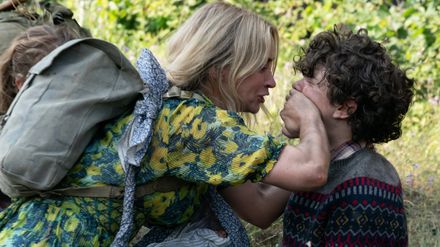
I like that A Quiet Place II does not shy away from emotional vulnerability. Marcus is a rare character in that he is a young boy who is allowed to be afraid. He does not want to take his father’s place to protect the family–that is eagerly assumed by Regan. He also does not want to be a more nurturing presence like his mother, as he pleads with Evelyn to stay instead of going on her supply run because he’s not comfortable watching the baby.
He is afraid, and he is allowed to be afraid. Nobody ever tells him to man up or that he needs to be the man of the family now that Lee is dead.
The setup for Marcus’s story, establishing his vulnerability, his fear, becomes undercut in the final images of the film. He finds his strength when he realizes that his sister is sending her feedback signal over the radio waves. He wields the radio like a shield, walking forward as he forces the monster backwards just before he shoots the monster in the face, killing it.
It rings hollow that Marcus’s triumph over his fear is firmly established in a moment of violence, especially when there have been so many signature character moments that were not. Lee’s signature character moment is telling Regan that he loved her, that he has always loved her. Emmett’s is when he offers himself up as a sacrificial lamb for the monster to save Regan.
It frustrates me because Marcus’s scene does recall a moment in the first film when Evelyn said he needed to learn these skills so he could protect her when she’s old and grey. And yet, though I love that Marcus finds strength in his sister’s actions, I do not love that the grace note is killing the creature. Perhaps it’s because so many stories of young boys becoming young men focus on an act of violence, and I very much dislike the way the film taps into this image and mentality.
Regan and Marcus have the same storyline in the film’s concluding moments. After Emmett makes his noble sacrifice, she distracts the creature with feedback from her cochlear implant by broadcasting it on the radio frequency. She steps forward, advancing even as the creature backs away. She picks up a long piece of scrap metal, wields it like a sword, and kills the creature. For just a brief moment, A Quiet Place II departs from the horror genre into fantasy, essentially positioning Regan as a knight slaying the dragon. It fits her character and her arc, in a way it doesn’t for Marcus. Killing the creature was avenging the death of her brother, and validates she is the inheritor of her father’s legacy. She succeeds where he fails: Emmett does not die, she does not die. She brings a chance at life to everyone tuned into the radio wave.

Like Marcus, Evelyn is able to show her exhaustion, her fear, her grief. Though her story line is not necessarily as exciting or as compelling in the first film, it’s nice she isn’t responsible for killing every monster. Perhaps that’s the real reason Marcus is stuck with the killing blow. Evelyn doing it again, essentially repeating the triumphant moment of the first film, would not have done anything for her character. But it also doesn’t do anything for Marcus’s character in a way that could be considered unique and compelling.
Though dialogue appears in the film to a far greater degree than its predecessor, it does not diminish the way the narrative uses environment and sound to bring the Abbotts’ experiences to life. It helps that it doesn’t simply rely on the creatures to be scary but also the most inane bits of human nature, such as Marcus not realizing the baby’s oxygen tank is almost empty as he puts the baby in a box to hush his crying.
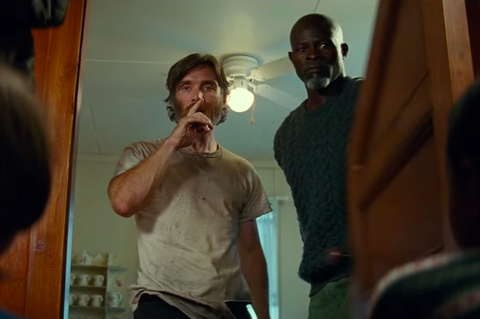
I wish I could say the film did nothing wrong–but it did. In the first ten or fifteen minutes, one of the more prominent Black side characters dies. This is a pretty common staple in the horror genre, and it is genuinely upsetting that A Quiet Place franchise, which was already pretty white due to the family dynamics in the first movie, decided to make such a racist choice.
I didn’t think it could be much worse until Djimon Hounsou’s character appeared. I thought, surely they would not kill the second Black character, and not utilize Hounsou’s acting skills.
They absolutely did that.
If enough effort had been put forth, Hounsou’s character could have been a foil to Emmett and the Abbotts. His son is alive. He was able to bring his children to safety. Yet it goes nowhere because the creature killed him, and it’s as if he never was, so insignificant is his death. Just horror fodder to scare the protagonists, who just happen to be white.
Even casting Cillian Murphy as Emmett was racist because this leaves the film with all white protagonists and dead Black characters, with barely any speaking roles or voices that would allow them to significantly shape the plot. Emmett did not have to be white, just as the Abbotts did not have to be white–except for the opportunities provided to John Kraskinski and Emily Blunt that carved their places in what would become A Quiet Place.
I do not want to diminish the significance A Quiet Place has for the Deaf community. It’s fantastic that a Deaf person is a main character and has a significant arc where her cochlear implant is important. Yet I am also saddened that this comes at the expense of someone else.
If you enjoyed A Quiet Place, its sequel is definitely worth seeing. As the story itself posits that people can choose to do good after a history of choosing ill, I’m hopeful that the Powers That Be who were involved with this story will choose to educate themselves on harmful genre tropes and resolve to do better with their future works.
A Quiet Place Part II comes to theaters May 28th.
